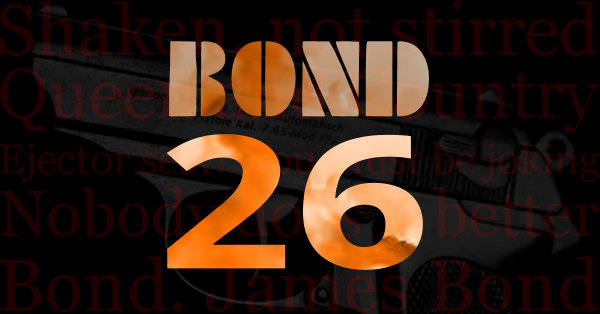A look at the cars from Sean Connery’s tenure as 007.
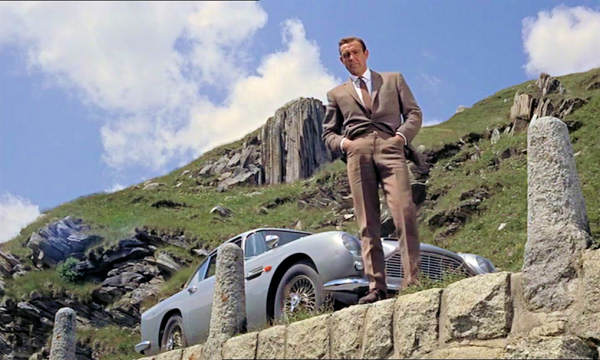
Sean Connery’s third film as James Bond introduced the quintessential Bond car, the Aston Martin DB5. Equipped with a variety of gadgets, it remains a fan favourite and has returned to the series numerous times.
But it wasn’t there right at the start. Here we take a look at that DB5 as well as other cars that appeared in Sean Connery’s Bond movies, including a Sunbeam Alpine, a Bentley Mark IV, and a Ford Mustang Mach 1.
Dr No
The first car ever driven by James Bond on the big screen wasn’t a Q-Branch equipped Aston Martin but a black second generation Chevrolet Bel Air convertible.
It’s the car Bond is picked up in from the airport which Felix Leiter and Quarrel tail in a Chevrolet Impala series 3 and similar to the car Paloma drives into the scaffolding in No Time to Die in Cuba.
Of course, the chauffeur is working for Dr No and attempts to dispose of 007, but when he meets his end, Bond drives the car to Government House. After meeting with Pleydell Smith and Commissioner Duff, the latter drives him to Strangway’s house in a Ford Consul Mark II.
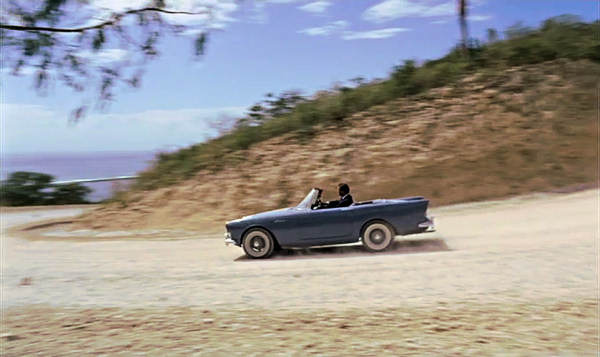
But the car people remember is the Sunbeam Alpine Series II Bond drives into the Blue Mountains to visit Miss Taro. In the book, Bond had driven a similar car owned by Strangways, whose disappearance he was investigating. Naturally, the journey from Kingston into the Blue Mountains isn’t without incident. On the winding dirt road, Bond is tailed by Dr No’s men in a hearse.
Miss Taro is surprised when Bond actually appears, as there was no intention that Bond should survive the journey. Only a crane blocking the road forces the hearse to swerve off the road, plummeting down the mountainside and erupting in a fireball.
The Sunbeam Alpine Series II was produced between 1960 and 1963. It was powered by a 1.6-litre engine that produced 80 horsepower. It was equipped with a four-speed manual transmission as standard, with optional overdrive available for improved fuel efficiency on the motorway.
From Russia With Love
Surprisingly, 007 isn’t actually introduced until 17 minutes into the second Bond film, when we find him entertaining Sylvia Trench in a punt. It’s a well equipped outing, with a picnic basket in the punt and a cocktail shaker and ice bucket on the grass within easy reach of where they are moored. A bottle of Taittinger is cooling in the water. It is fastened by a length of string running between Bond’s toes so he can lift it out to check the temperature.
Unfortunately, their relaxing afternoon is disturbed by the beep of Bond’s pager. Bond excuses himself.
“I have to make a phone call”, he explains to her protestations as he walks to his car parked a short distance away and lifts the telephone handset located on the passenger side. Miss Moneypenny has called asking him to return to the office.
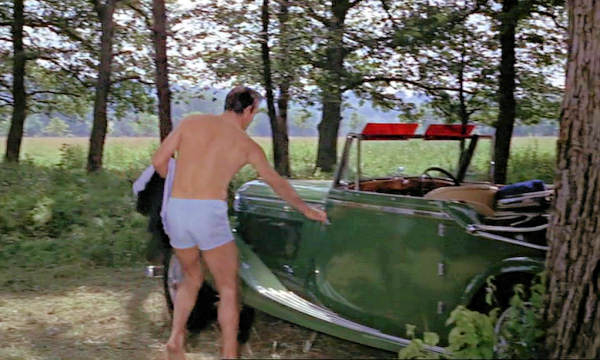
The car is a 1938 Bentley 3½ Litre drophead coupé with coachwork by Park Ward. This was a nod to the Bentleys driven by Bond in the books, although this particular model never appeared. It’s extraordinary to think that in those days Bentley provided the car without bodywork. They came from the factory as a bare chassis with engine and gearbox with custom coachwork built for each customer – in the books Bond’s was built by Mulliners. This led to many Bentley distributors stocking their showrooms with their favourite designs to be able to supply complete cars directly.
Later on, Bond is driven from Istanbul airport by one of Kerim’s sons in a 1958 Rolls-Royce Silver Wraith. And when they go to the gypsy camp, Kerim drives Bond in a 1960 Ford Ranch Wagon.
After leaving the Orient Express, Bond commandeers the flower truck that had been used to block the line. The truck is a 1961 Chevrolet C30 Apache. After knocking out the driver and hauling him into the passenger seat, Bond bundles Tania into the back, on a bed of flowers. Climbing into the driver’s seat, this is the only road vehicle Bond drives in From Russia With Love.
It’s not the only vehicle though. Bond gets behind the wheel of a 23-foot Fairy Huntress as they are pursued by SPECTRE. Luckily the wood-hulled speedboat is loaded with barrels of fuel.
Goldfinger
The third entry in the James Bond series was when everything gelled completely. In Goldfinger, the filmmakers created something that was exponentially greater than the sum of its parts. If Cubby Broccoli and Harry Saltzman had been fine tuning the Bond formula before, Goldfinger saw it honed to perfection.
Shirley Bassey sang the theme song; John Barry was back with a completely self-assured score; the one-liners were written to perfection; and Sean Connery looked like he was having the time of his life.
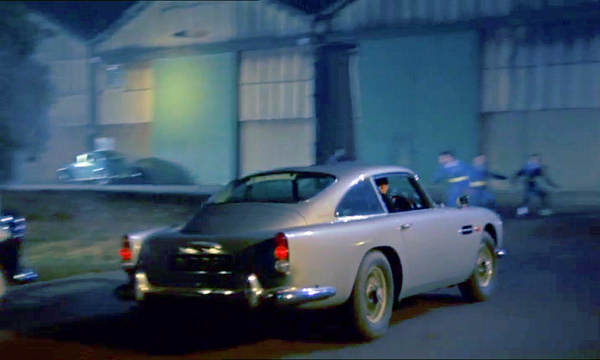
And of course, with the Aston Martin DB5, Goldfinger was year zero for the cars in the James Bond films. Its sleek design, luxurious features, and impressive performance made it a perfect fit for the suave and sophisticated secret agent. Its 4.0-litre inline-six engine with around 282 horsepower allowed it to reach a top speed of 145 mph (233 km/h) and accelerate from 0-60 mph in 8 seconds.
The DB5 is the car that people still associate with James Bond. Such is its popularity that it not only reappeared in the following film, but it would also make a comeback in the 1990s with Pierce Brosnan and, even more emphatically, in Daniel Craig’s films.
Bond had driven an Aston Martin DB Mark III in Ian Fleming’s book (Fleming incorrectly calls it a DB III), rejecting a Jaguar 3.4 which was the other choice from the Secret Service car pool.
Cubby Broccoli wanted to put Bond in a Jag (an E-type) but his request for cars was declined by the company and so the filmmakers went to Aston Martin instead. By the time it came to filming, Aston had upgraded the DB4 Series V with a larger, aluminium engine and launched it as the DB5 in September 1963.
Special Effects wizard John Stears reportedly convinced the car manufacturer to provide him with the original prototype to which he added the gadgets. Another DB5 was provided for the driving scenes and, after filming, fitted with front machine guns, revolving number plates and the rear bullet screen for publicity purposes. Two more gadget fitted cars were used for promo purposes only.
Other notable cars in the film include Goldfinger’s personal 1937 Rolls-Royce Phantom III, driven by Oddjob, an early example of a Ford Mustang convertible driven by Tilly Masterton, and a white Ford Thunderbird convertible with Felix Leiter behind the wheel. Oddjob drives a Ford Country Squire when taking Bond from Blue Grass Field to the Kentucky stud farm, he shoots Mr Solo in the back seat of a Lincoln Continental which is then crushed with Solo’s body inside. Oddjob drives the crushed car back to the stud farm in the back of a Ford Ranchero.
Thunderball
After the success of Goldfinger, it comes as little surprise to see Aston Martin’s return in Thunderball. The pre-title sequence ends with Bond loading his jetpack into the boot of the DB5 and raising the rear bullet screen before hosing down the pursuing gunmen using rear mounted water cannons.
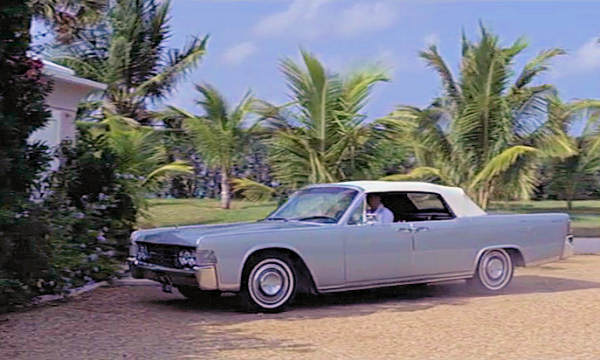
That’s the last we see of the DB5 though, as Bond drives a powder blue 1965 Lincoln Continental convertible after arriving in the Bahamas. After Emilio Largo invites him to lunch at Palmyra, his house, Bond pulls up in the Lincoln with the white top up.
Earlier in the film, Colonel Jacques Bouvar arrives at the chateau in a black 1964 Continental Executive Limousine disguised as his widow.
Ford makes a number of appearances in the film too. Largo arrives at SPECTRE’s Paris headquarters in a 1965 Ford Thunderbird; Count Lippe drives a 1957 Ford Fairlane 500 Skyliner, which is destroyed by rockets fired from Fiona Volpe’s motorbike (a BSA A65 Lightning); Angelo Palazzi is shuttled to the RAF station in a 1962 Ford Zephyr 4; Fiona Volpe picks up Bond on the road in a 1965 Mustang; and after capturing him she drives a Ford Country Sedan.
You Only Live Twice
Sean Connery’s fifth Bond film is quite unusual. While 007 pilots Little Nellie above the volcano under which SPECTRE’s secret lair lies, he doesn’t get behind the wheel of a car at all.
That doesn’t mean the film is devoid of automobile interest though. Aki drives Bond around in a white 1967 Toyota 2000GT.
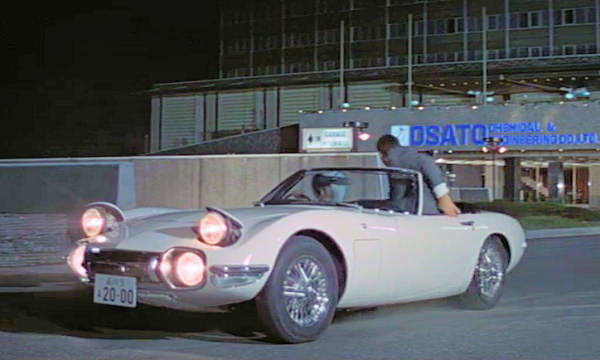
Powered by a 2.0-liter straight-6 engine with 150 horsepower, it offered a top speed of around 135 mph (217 km/h) and accelerated from 0 to 60 mph (0 to 97 km/h) in approximately 8 seconds. With its lightweight aluminium construction, advanced suspension, and precise handling, the 2000GT provided an exhilarating driving experience.
Already a stunning looking car, what makes this one stand out is that it is a convertible. Amazingly, Toyota never produced a drop-top production version.
Toyota built two convertibles for the filmmakers, ostensibly because Sean Connery was too big for the standard car. The suspension on the custom convertibles was dropped by an inch and the windscreen replaced by removable acrylic to aid filming.
One of the cars was fitted with gadgets by John Stears but it is unknown what happened to it. The other was eventually purchased by Toyota and is now in the Toyota Automobile Museum.
Other cars appearing in the film include a 1964 Dodge Polara, used as a getaway car after Henderson’s murder, and a 1966 Toyopet Crown Deluxe (1966). The latter pursues the Toyota after Bond leaves Osato Chemicals. After a high speed chase, the car is eventually intercepted by a helicopter equipped with a large magnet it uses to lift the car off the road and dump it in the bay.
Toyopet was a brand of cars and small trucks owned by Toyota, renowned for their reliability, fuel efficiency, and affordability. Toyopet vehicles like the Crown and Corona gained popularity globally during the 1950s and 1960s.
Diamonds Are Forever
Sean Connery’s return to the role of James Bond, after sitting out On Her Majesty’s Secret Service, sees another film in which Bond lacks serious wheels of his own.
Bond assumes the identity of Peter Franks after the diamond smuggler is detained at Dover. Bond takes Frank’s mustard coloured Triumph Stag and boards a Seaspeed hovercraft. The Seaspeed service ran between Dover and Boulogne between 1968 and 1981, when it merged with a rival to create Hoverspeed. The hovercraft that appears in the film is the original prototype of the SRN4 hovercraft, the Princess Margaret.
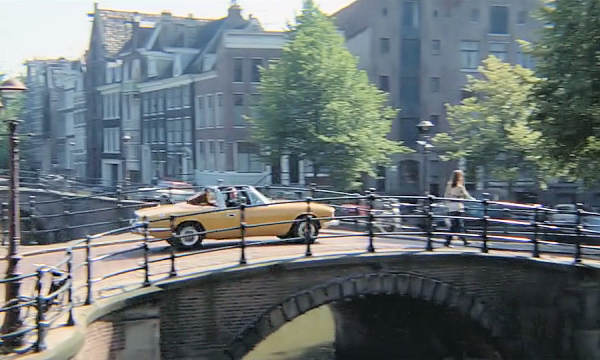
We next see the Stag in the distance as we follow Wint and Kidd in Amsterdam. Bond crosses a bridge spanning a canal as he heads to his rendezvous with Tiffany Case at her apartment. The car that appears in the film is a pre-production mark 1.
Designed by Italian designer Giovanni Michelotti as a luxury sports car, the Triumph Stag was introduced in 1970. It featured a distinctive design, with a long bonnet, sleek lines, wood trim and a folding soft-top roof, giving it an elegant and sporty appearance.
The Stag initially featured a 3.0-liter V8 engine, one of the first British production cars to use a V8 and aimed to provide a balance between power and refinement. The engine produced around 145 horsepower, giving the Stag respectable performance for its time, with a top speed of around 120 mph. Its introduction generated excitement among car enthusiasts, as it offered a combination of style, performance, and four-seat practicality. However, the car was beset by reliability issues.
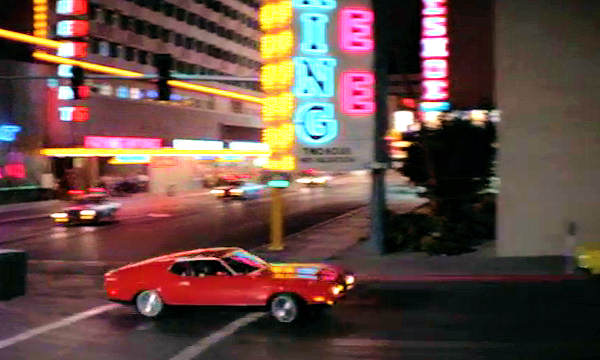
While the Stag’s screen time is limited, Tiffany’s 1971 Ford Mustang Mach 1 is involved in the film’s major chase sequence. A performance-oriented fastback variant of the Mustang, the Mach 1 was first introduced in 1969 and designed to offer enhanced performance and aggressive styling. It featured various performance upgrades and visual enhancements, including a more powerful engine. The restyled 1971 Mach 1 featured dual hood scoops, although these weren’t functional in the standard car. The muscle car Mustang variant is much larger than the standard car and lacks the well-balanced proportions and sleek design of the original.
While the car has overdone the steroids for sure, it still proves effective as a getaway car as Bond and Tiffany are pursued by the Las Vegas police department though the streets of Sin City. After Bond escapes from Whyte’s research labs, first in a moonbuggy and then on a Honda three-wheeler, Tiffany is waiting at the gate. “Get in the car”, Bond instructs her.
While earlier she had driven Bond, she runs for the passenger door and Bond gets behind the wheel. When they arrive back in Vegas the police are looking out for them. After being stopped opposite The Mint on Fremont Street (now part of Binion’s), Bond makes his escape but is soon pursued by half the LVPD driving 1970 Ford Custom patrol cars.
Other notable cars in the film include the Slumber Inc hearse in which Bond travels with the coffin carrying Peter Franks – and the smuggled diamonds. It’s a 1968 Cadillac Funeral Coach with Superior Sovereign Landaulet coachwork. Bond is briefly seen in a bronze 1971 Ford Galaxie 500 rental car and gets inside Willard Whyte’s Techtronics research centre by sneaking into a Ford Econoline van. Wint and Kidd bundle an unconscious Bond into the boot of a 1971 Ford Thunderbird at the Whyte House and drive out to the Nevada desert. There they leave him in a section of pipe to be buried alive. He later arrives at the Elrod House, where Willard Whyte is being held, in one of two black Ford Customs. And finally, Tiffany is thrown into the back seat of a black Mercedes-Benz 600 limousine to find herself seated next to Blofeld, in drag, with his cat.






